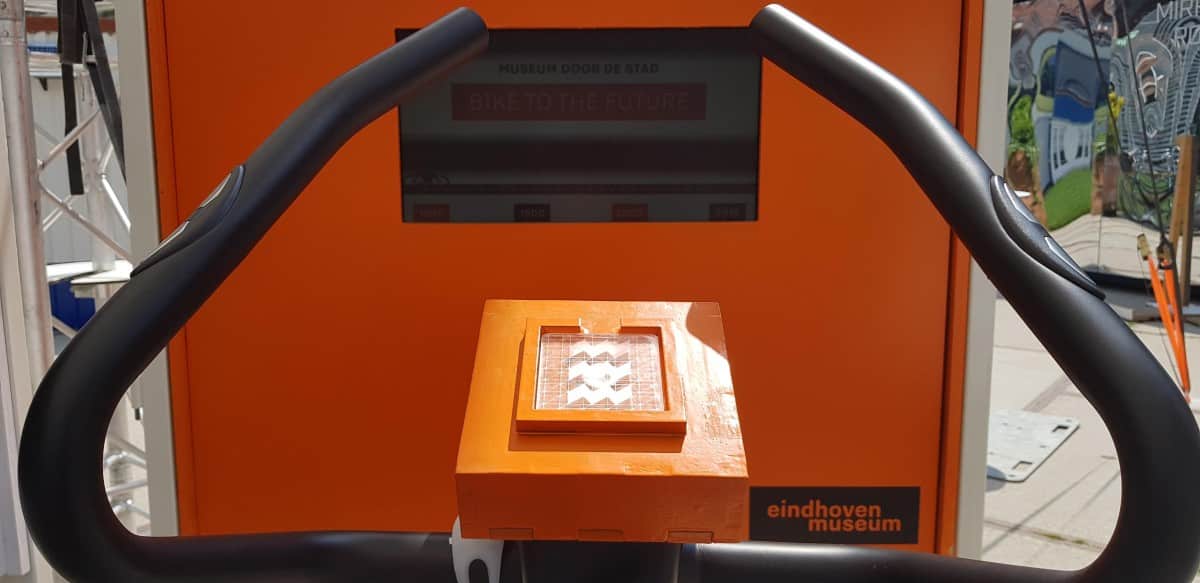
“No, you have to pedal to see the future”, laughs Thijs Baselmans. The TU Eindhoven student just put a visitor on an exercise bike. In the middle of the Ketelhuisplein. The bicycle is part of Museum door de Stad (“Museum throughout the city) that can be found on the square this whole week – thanks to Dutch Technology Week. All kinds of installations – from autonomous bumper cars and data mirrors to an exoskeleton – made by different designers or students are to be seen and used.
Read more about Dutch Technology Week.
Baselmans helps his pedalling visitor through the history of mobility in Eindhoven; on a big screen next to the bicycle the journey starts at 1800. The longer the cyclist pedals, the further he goes in time. “The museum approached the TU Eindhoven to ask how they could attract more visitors. They don’t have a physical building, but they do have a depot with lots of things and, above all, lots of stories. In this cycle tour we take visitors on a journey through the history of mobility here in Eindhoven,” explains Baselmans. Together with seven other students, he worked on the installation, they dived into the depot and brought out everything that had a link to transport. “Of course you can’t ignore DAF, but we also found things we didn’t know ourselves.”
“But that’s not Eindhoven at all”, the cyclist points to the screen. Baselmans explains to the surprised man that they only used archival footage of the city so the only conclusion can be that he does pedal in Eindhoven. On the screen, you can see a picture of the Market at a time when cars were still driving and parking there. “Look, this is also fun: did you know that Philips had already introduced an electric bicycle in the 1940s, but it never really broke through? You needed a special driver’s license for it. You also had to pay taxes because it was seen as a motorized vehicle.”
In addition to the bike ride through time, the students made a chip that collects data about this week’s participants. “The chip stores, for example, how fast you cycled on our machine. The idea is that people can have a personalized postcard printed afterwards. So if you’ve cycled very fast, the system ‘sees’ that you’re a fit young man so you get a sports card based on that.” Baselmans grabs the chip: “Only it’s not working right now. It’s also a learning process for us.”
The man keeps on cycling while steam trains and trams are simmering by on the screen. “I didn’t know that, did a tram ever ride in this city?” Black-and-white photos make way for colour photos and the old buildings are changing into the structures that characterise Eindhoven today. “And what is this?” the man asks curiously. Baselmans: “This is the area around the railway station, where a lot of construction will take place in the coming years. There will be big towers and there is no place for cars anymore.” Baselmans and his team have filled the future ‘freely’, with ufo-like vehicles flying through the city. But also solar cars of the student teams of the TU Eindhoven are passing by. With a wink, Baselmans says: “You have to promote the university a bit, don’t you think? But solar cars will certainly be around, just look what Lightyear is doing.”
“Museum throughout the City” will be on the Ketelhuisplein in Eindhoven until Saturday.

